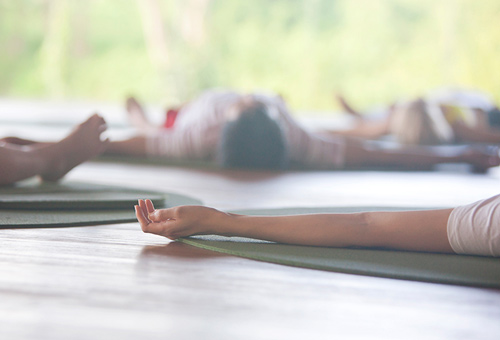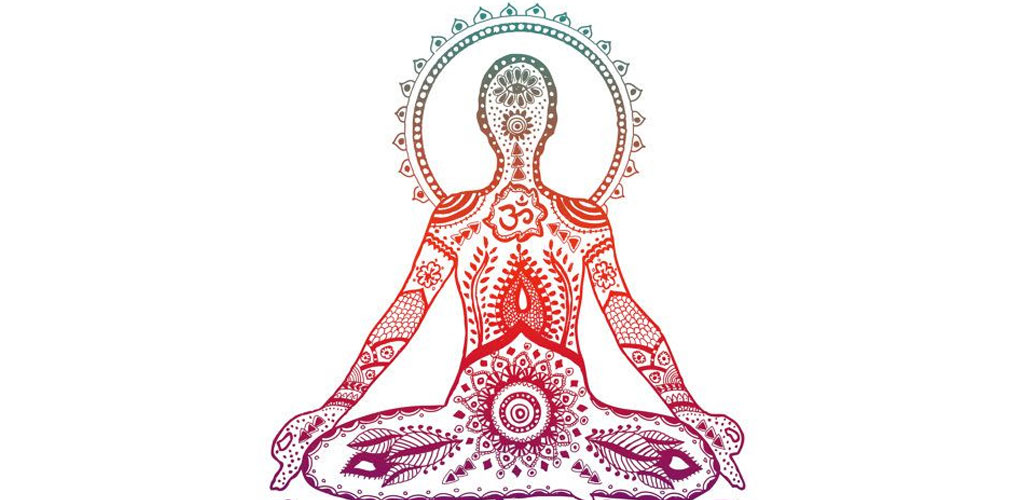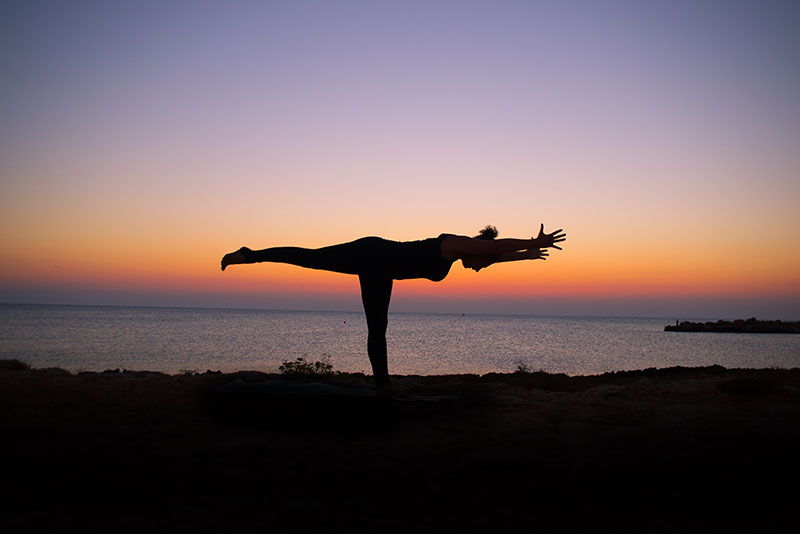Starting yoga can be a daunting prospect. There are so many words, Sanskrit names and specific terminology to remember. But before you let that put you of, or scare you away, here, The Centre has shared a comprehensive glossary of 12 yoga terms you might learn along the way.
And don’t worry. Yoga is a very personal journey and all practitioners are encouraged to be gentle with themselves, so take your time and you’ll soon know your Namaste from your Pranayama and your Savasana from your Uttkatassana.
- Yoga: There is really no one singular definition of yoga, however the Sanskrit word means union or connection, which in the practise of yoga can represent the union of the mind, the body and the spirit as well as the union or connection between the movement and the breath.
- Hatha: The original term Hatha yoga, was used to describe all physical yoga. It has since been used to describe a specific style of physical yoga. Hatha in Sanskrit means the sun and the moon and as such, this style of yoga is used as a basis of all other styles. Hatha is usually one of the slower forms of yoga and each pose is held rather than practised in a flowing sequence.
- Om: Om (or Aum as it is also spelled) is a sacred Hindu sound which can be said or chanted as a mantra. Often chanted at the beginning and the end of yoga sessions, the sound is made up of three fluid vowels – a, u and m – which, when spoken or sung create deep vibrations throughout the body. Om is said to embody then entire universe, as mythology writes that God created the universe from the sacred sound. Om is practised in yoga to connect to ourselves and to the universe and nature. The sound also helps to relax and slow down the nervous system and can help us achieve a deeper practise. To delve deeper into Om, check out this previous blog.

- Vinyasa: Another word derived from Sanskrit that you will probably hear from day one, Vinyasa means a flowing sequence of poses that follow the breath. The most commonly used Vinyasa sequence is from plank into Chaturanga, flowing into Upward Facing Dog and then down into Downward Facing Dog. The word can be literally translated to mean the specific order or arrangement of something, or to move from one thing to another. Vinyasa can also be used to describe a particular style of yoga, like Hatha does.
- Pranayama: Prana in Sanskrit means breath or life force, and in Yoga terms, Pranayama is the control of this breath or life force to support the body and mind throughout the yoga practise. In practice this is using different breathing techniques to affect the mind and energy of the body.
- Namaste: You might see or hear your yoga teacher ending the lesson by bowing and saying ‘Namaste’. In Sanskrit, namaste literally means “I bow to you”, however, the more sacred and spiritual meaning of the term is "The light within me recognises the light within you," stemming from the believe that we are all made of the same One Divine Consciousness.

- Surya Namaskar: Surya Namaskar is a Sun Salutation, one of the first Vinyasas you will probably learn on your yoga adventure. A Sun Salutation is a sequence of positions done in a flow. There are various different versions of the Sun Salutation, but the philosophy behind it is to honour the sun in all its life-giving glory.
- Ujjai: Ujjai is a special yoga breathing technique (a pranayama) that is used to help us synchronise the movement with the breath as we practise, thus deepening and enhancing the poses. Ujjai is practised by breathing in deeply through the nose whilst gently restricting the throat with the mouth closed, and then slowly releasing the breath through the nose again. Ujjaii breath also helps to increase the oxygen in the blood, builds heat and energy in the body and decreases stress and tension.
- Savasana: You will quickly learn to love this term as it means the physically hard part of the class is over and it’s time to lie down on the mat and still the mind. Literally translated from Sanskrit as Corpse pose, Savasana is practised at the end of the class and encourages you to focus on the breath and relax the mind. This is also the time that the body can really soak up and process all the things it has learnt or re-learnt during the class.

- Mantra: A mantra is a word, sound or phrase that is repeated either as a prayer or a chant. Mantras can be used to aid meditation and to focus the mind. Mantras are also thought to have vibrational significance that can help us connect the mind, body and spirit.
- Chakra: The chakras are energetic centres – or wheels – that turn to allow for energy to flow inside the body. The well known chakras are the seven that are located between the crown of the head and the base of the spine. Each chakra is linked to different parts of the body and have different meanings. It is said that when a chakra is blocked, energy cannot flow freely around the body, which can lead to physical and emotional illnesses.
- Patanjali: At some point on your yoga journey, you may find yourself wanting to dig a bit deeper into the teachings, philosophies and history behind this ancient practise. This is when you might find yourself encountering the Yoga Sutras of Patanjali. Patanjali was a philospher who wrote a set of guidelines or instructions to help you navigate yourself through the human condition. They are offer a methodology to deepen your practise and advance on your path to spiritual awareness of the mat.
Now you know some of the basic useful terms we use in most yoga classes here at The Centre, come down and try out a class. To view our current schedule of Hatha and Vinyasa yoga classes click here.


